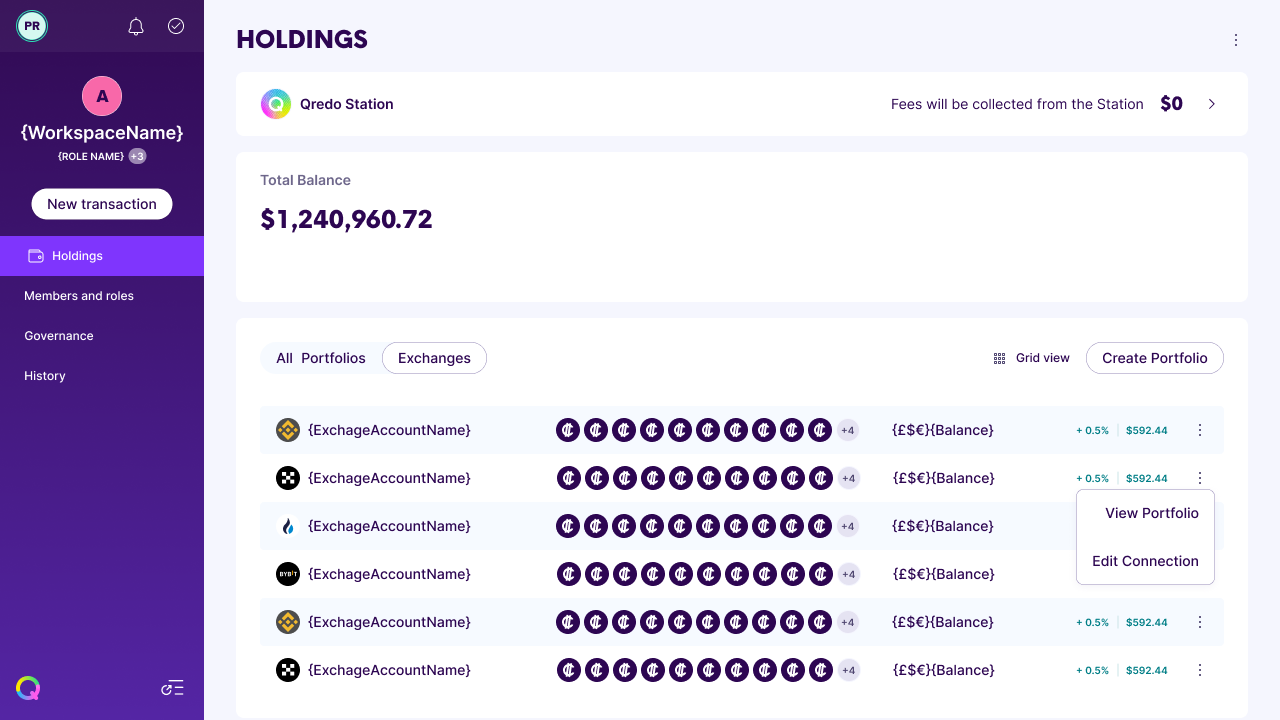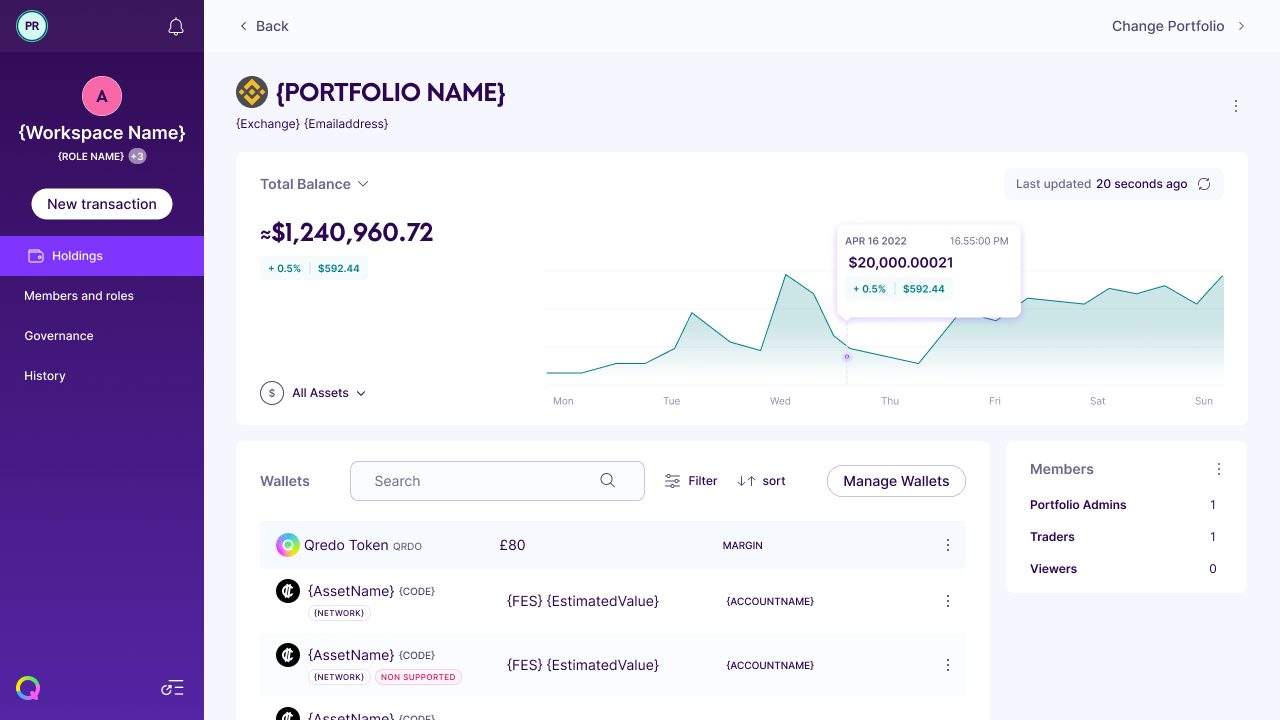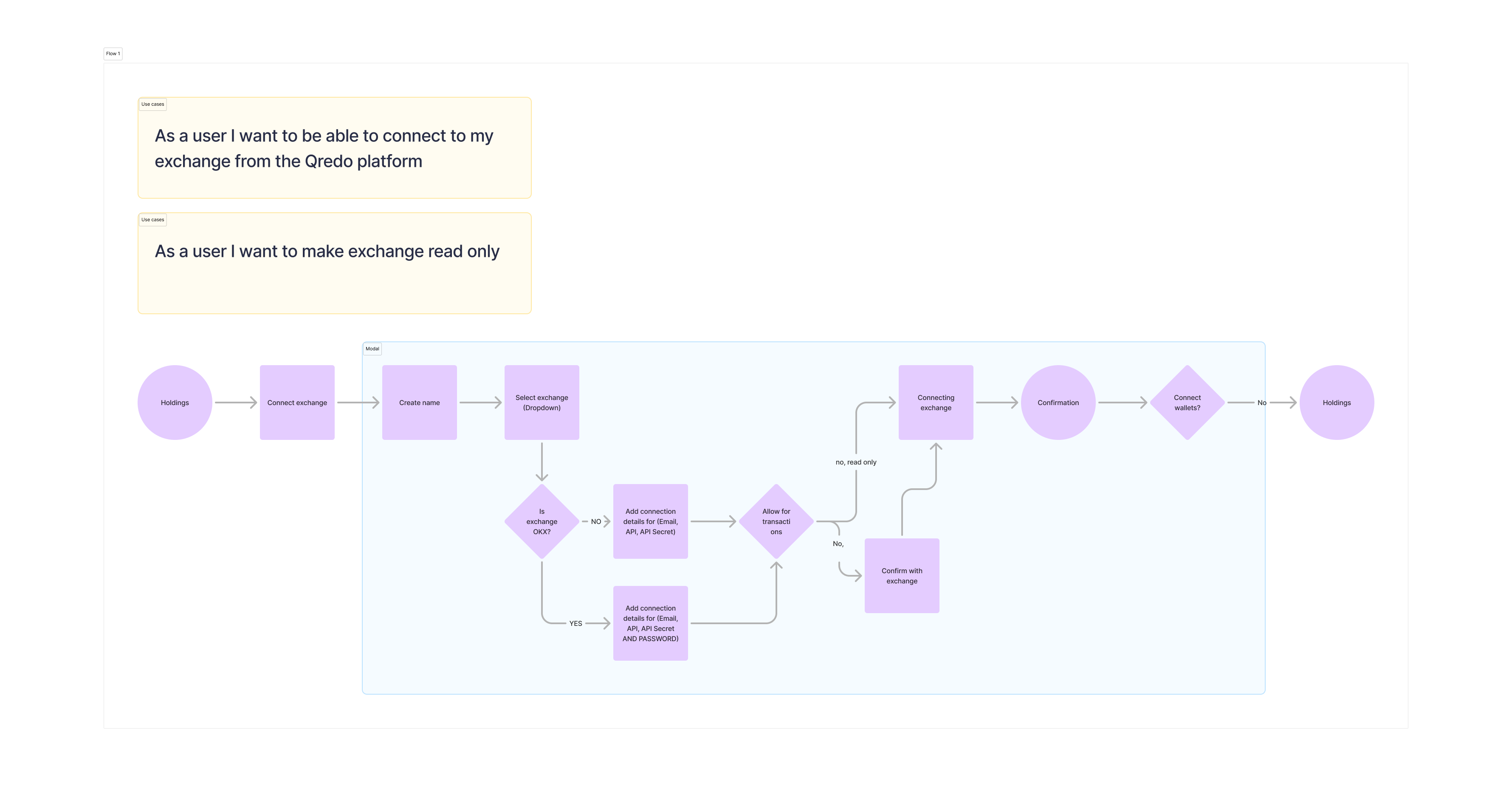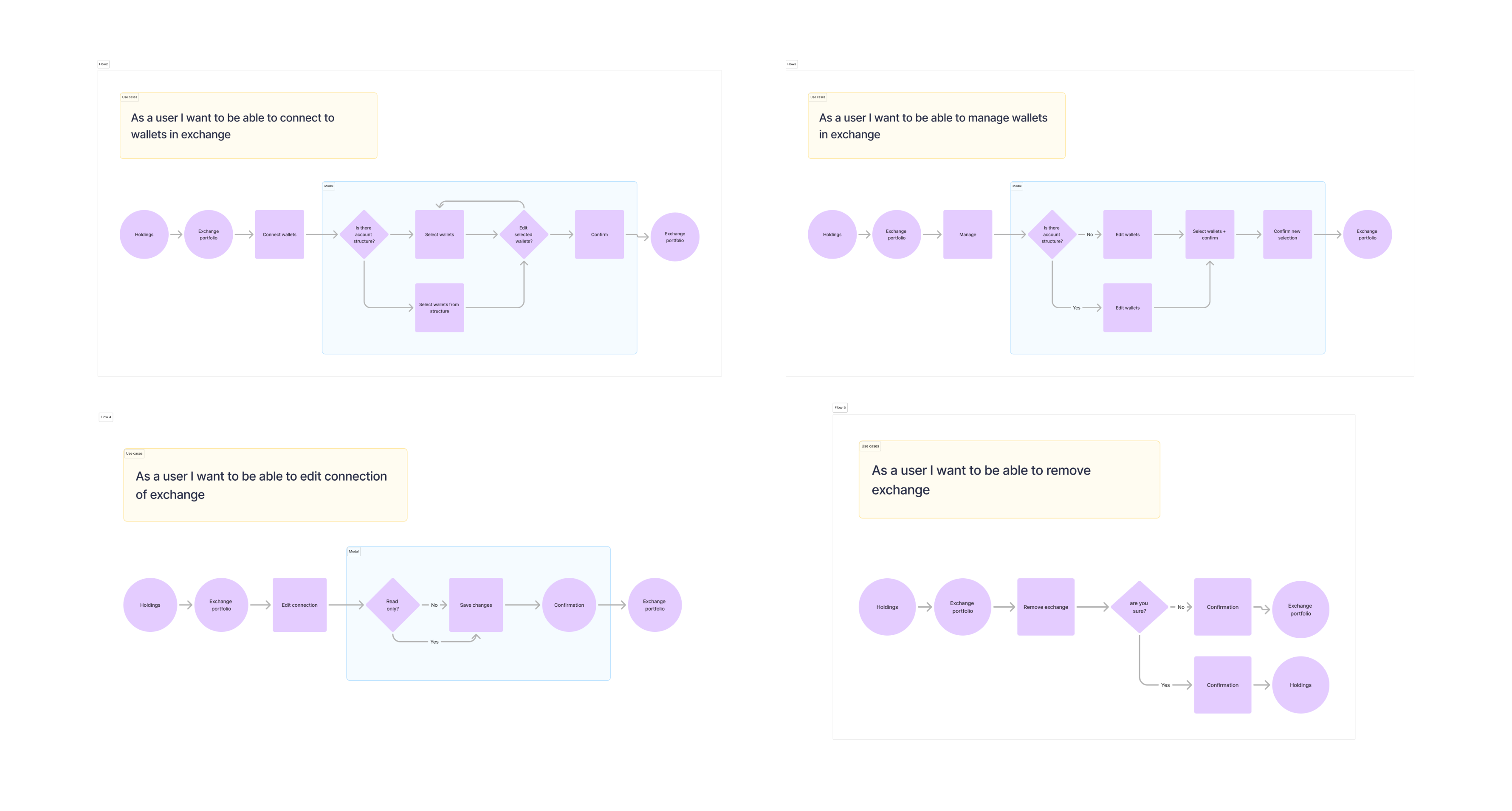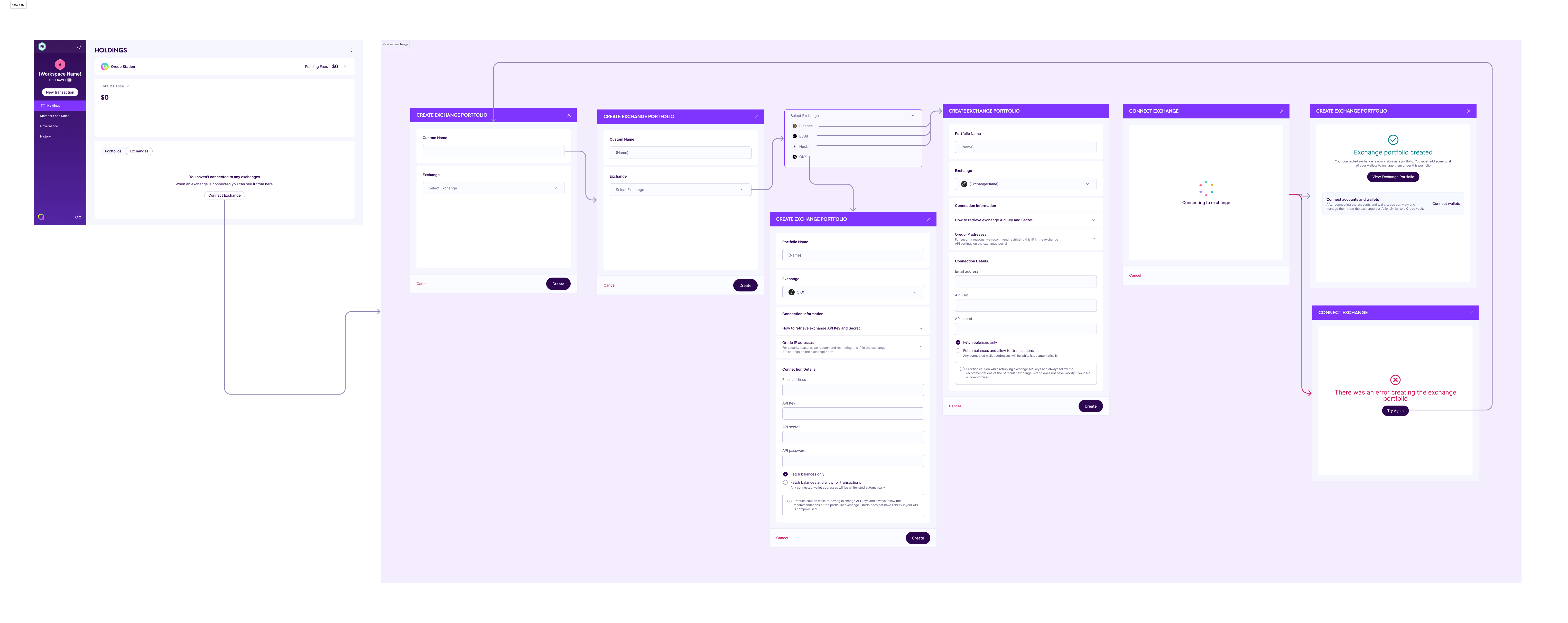Distributed MPC wallets for enterprises:
A crypto start-up with over 85,000 users, 350 institutional clients and over $4 billion monthly asset movements in and out of wallets.
Qredo focuses on providing institutions a secure way to store and interact with their cyrpto assets, leveraging blockchain and multi-party computation technology to eliminate private keys, and Web3 integrations such as MetaMask
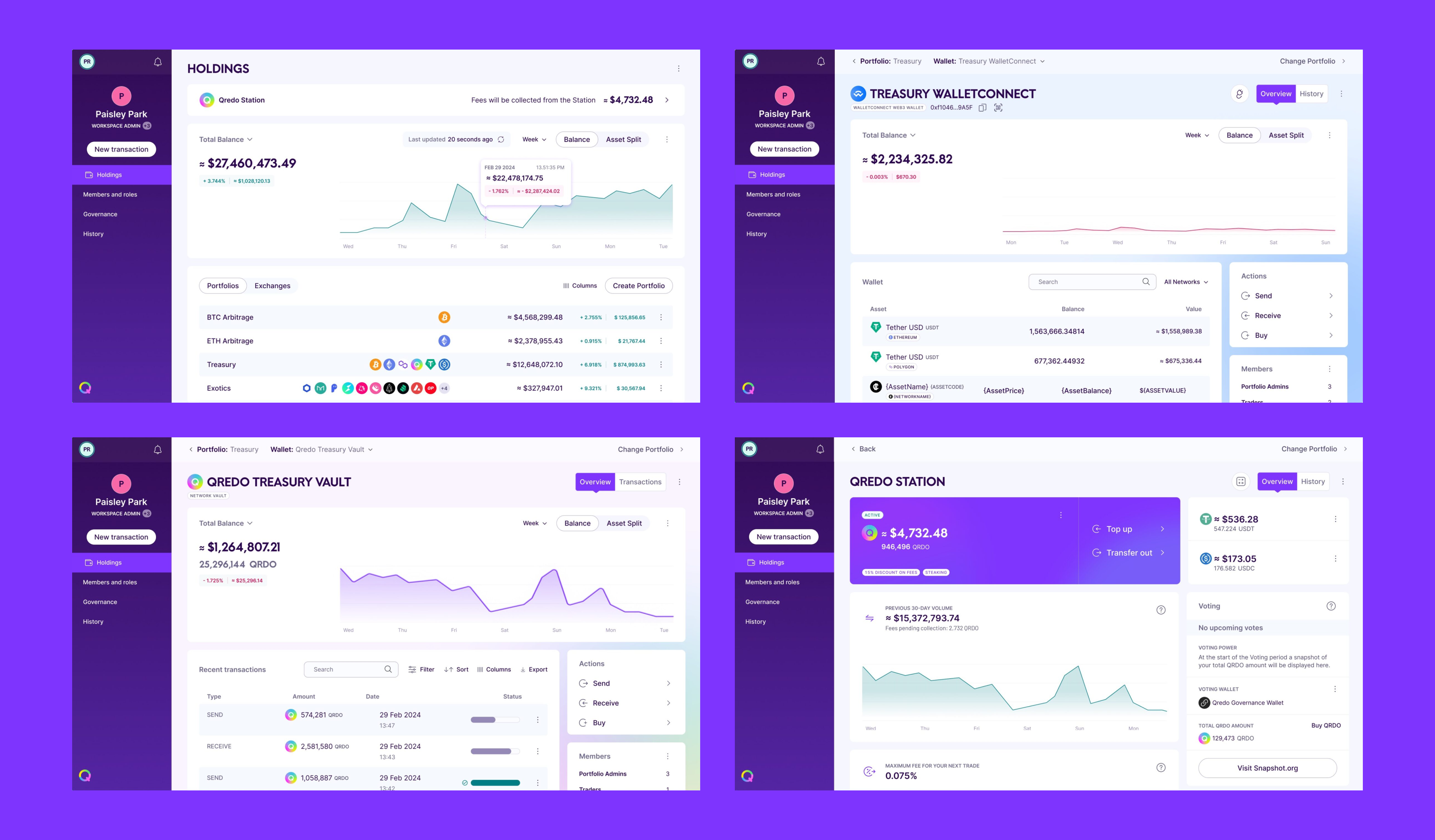
Overview
I joined Qredo during a comprehensive replatforming of the entire customer facing platform and signing app. With the intention to add a new feature that allowed users to connect to exchanges, it was uncovered that it wasn't built with scalability in mind. They needed another talented senior designer to keep up with this. That's why I was hired.
After getting through the onboarding, and digesting all that was a blockchain MPC web3 platform we got down to business. I collaborated with the design team to bring to life a new look and feel and design philosophy. I was partnered with a Project Manager in and worked closely with engineers in a cross-functional team to build features like ‘Glass’ and Advanced Approval Policies.
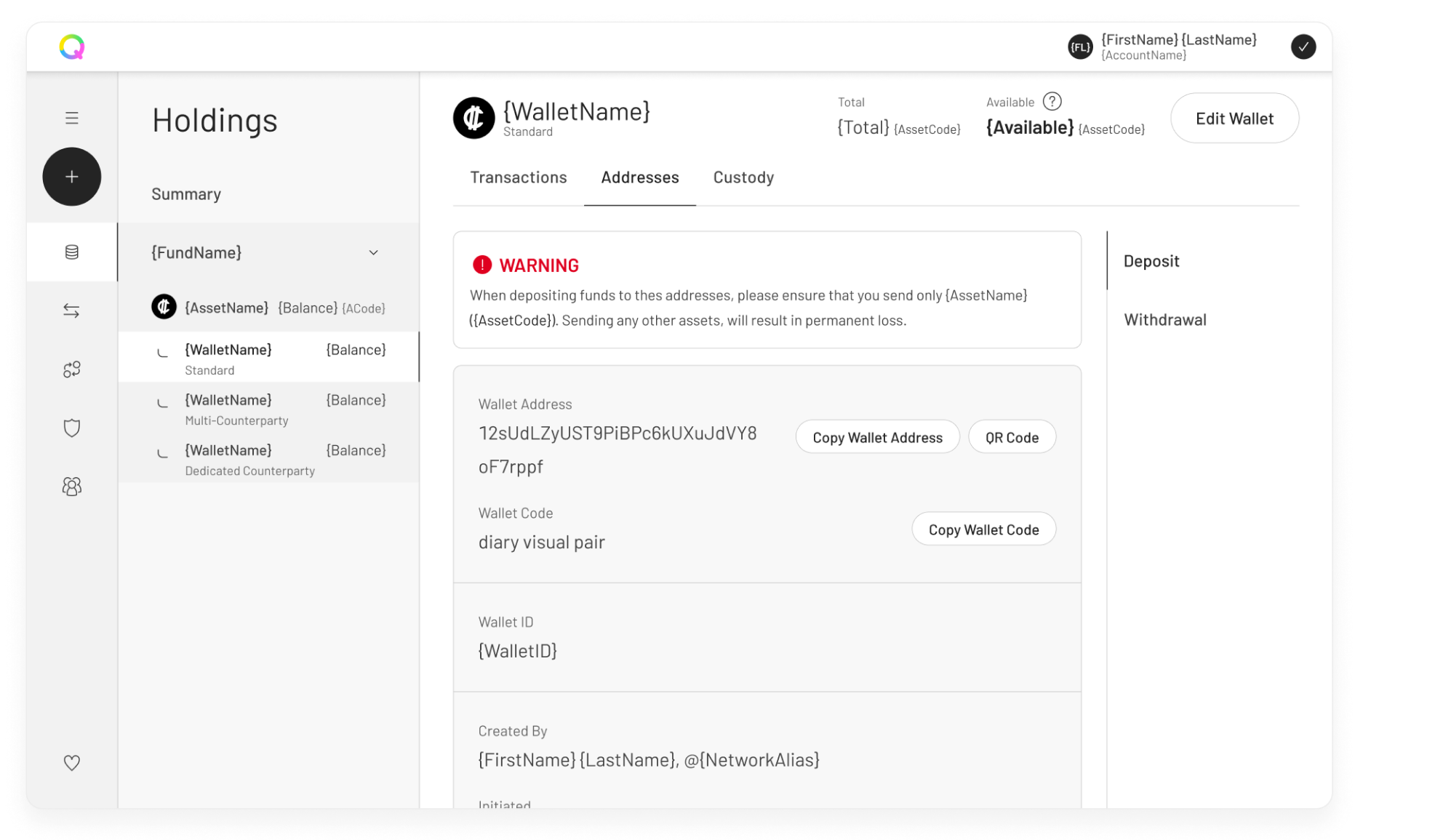
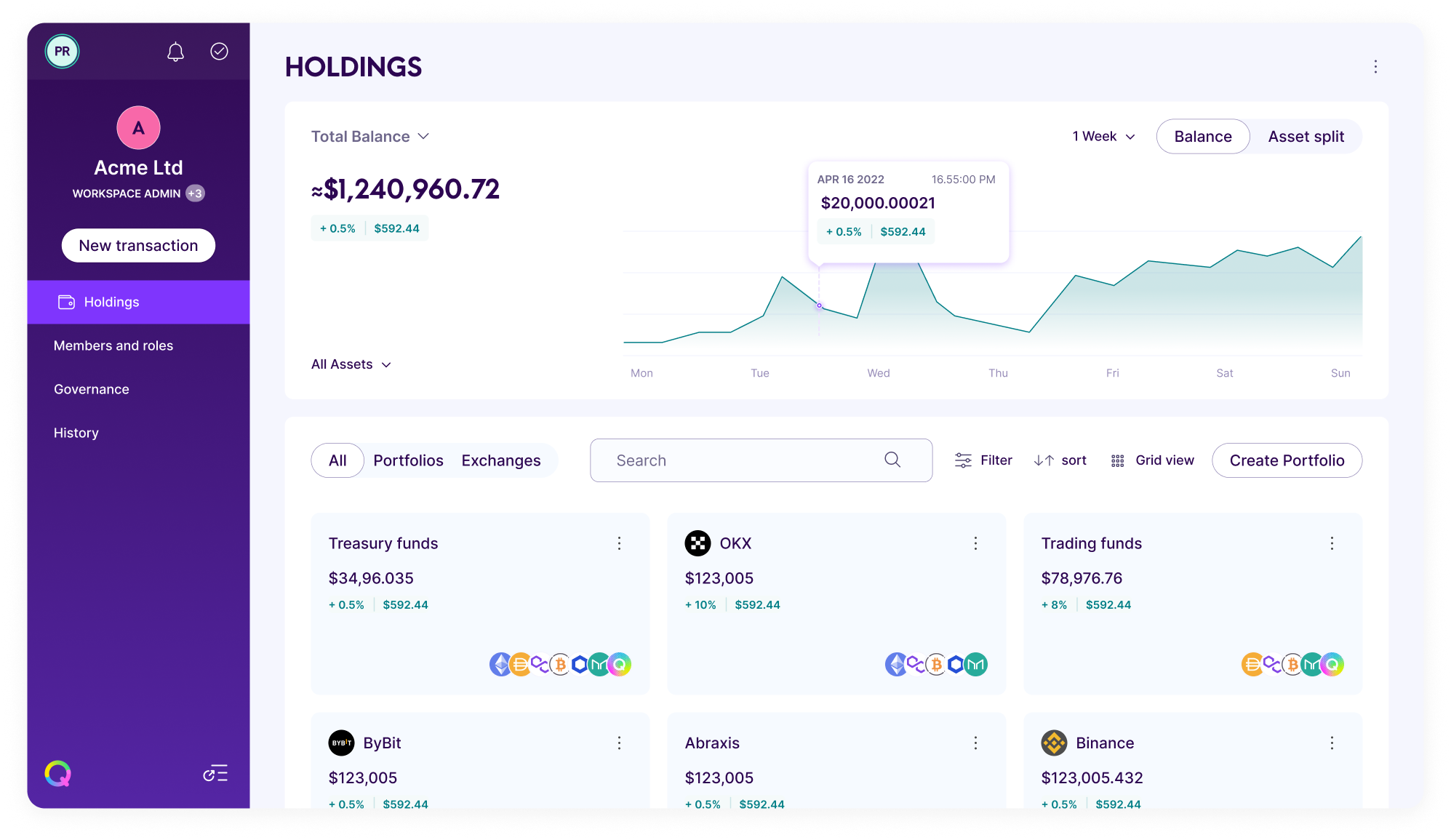
GLASS: A QUICK CASE STUDY FROM MY TIME AT QREDO.
The Problem
"Users often have assets spread across multiple exchanges, making it difficult to get a comprehensive overview of their portfolio, manage and maintain secure."
Until now, users, (think enterprises with lots of $$$) would have to manage their assets across various exchanges such as Binance, ByBit, Huobi... Imagine the headache? So, by conducting user research I uncovered paint points such as fragmented access and inconsistent UI across exchanges, security issues, 70% of users manage assets over more than one platform, and 80% of those people find it counter productive.
The Outcome
An integrated feature that allows users to connect to, view and interact with their exchanges, therefore their entire portfolio, from the Qredo platform starting with Binance, OKX, Huobi and ByBit (you gotta start somewhere right?)
After 30 days there was a 23% increase in retention and 15% increase in adoption, a 20% decrease in time needed to manage their portfolio and 90% of users reported feeling more secure. We also recieved reports that users were just very appreicative of this simplified approach.
The Process
DISCOVER AND DEFINE
Having put together the research I could then define use cases which I then illustrated as user flows, outlining how users would connect to different exchange accounts, their wallets in those exchanges and where in the Qredo platform.
This is when I realised I needed to get involved with engineering to understand the technical restraints that were involved, and how exchanges were built both in the front and back-end so we could create a consistent user experience. It was almost smooth sailing, but I came to a stand still when I realised that we needed to make sure what we were building would coinside with the other moving parts of the Qredo platform such as transactions, policies and whitelisting addresses. I held calls to gather as much information as possible to relay back to my team, and held a cross squad workshop to identify the overlap between products.
IDEATE, ITERATE AND DESIGN.
You know the drill. I was now embarking on making this thing real, starting with sketches (this helps avoid getting distracted with making things look pretty), to more presentable sketches, to wireframes and then, using our new fleshed out pattern library and design system the high-fidelity mockups and flows, validating each step with peer reviews and feedback sessions. We all know that it's never that linear, there’s a lot of backwards and forwards, circles and blocks. There were a few rounds of technical requirement changes, which impacted directly with the design. The syntax and language was reviewed various times, my Product Manager and I having lengthy calls between eachother and with stakeholders to clarify, exchanges, users and Qredo all have slightly different ideas on what something is and it was important to make sure what we were saying was understood. Anyway, we got there finally. Prototypes were made, and tested, validated and we were ready to ship.

Takeaways
I learned that when working in a squad structure in a company it is incredible important to maintain the communication between squads to make sure that projects are being designed and built consistently, and technical requirements are considered across the board. I also found that a lot of patience is needed when working in new technology like Blockchain and Web3, even if you do your due diligence. Requirements can change. This reinforced my theory that as designers we should be having open dialogues with engineers from kickoff to streamline the design process and make room for adapting.
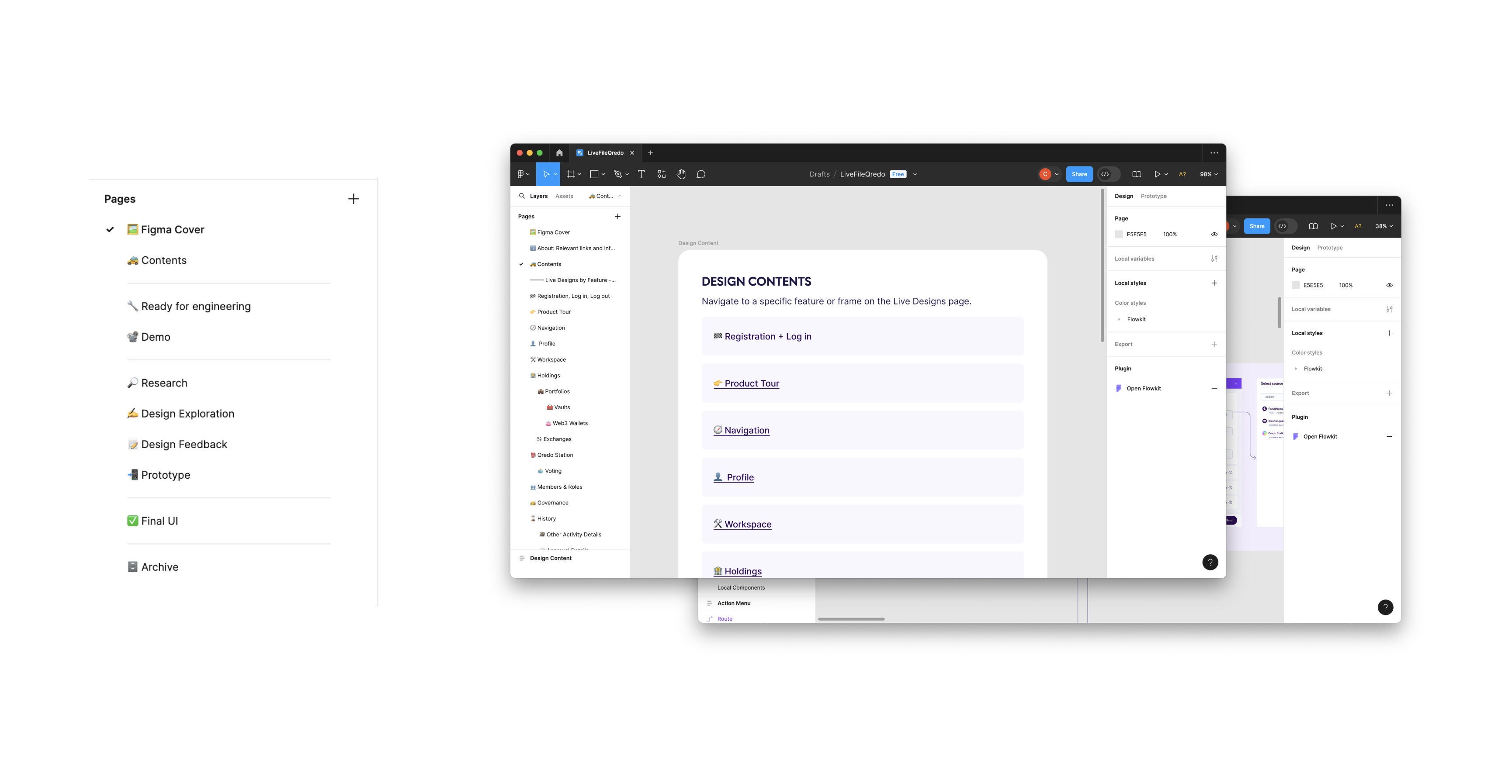
My other focuses at Qredo.
So congratulations if you have read this far! I thought I would take a moment to mention some of the stuff I did for the team that went behind the scenes.
As we were going through a chaotic period I noticed that documentation and Figma files were going wild. Everyone was doing their own thing. I could never figure out what was in design, development and live, some things still hiding away in the exploration pages, finding relevant files without having to slack someone was close to impossible. It was a trying process, and needed attention.
By talking to the team and stakeholders, doing some desk research and holding a workshop I could build a clearer design process and working file to follow Figma that would help keep design documentation consistent between designers and legible by everyone. It then took me time and patience to track down and verify all current and upcoming live designs to create another file to work as a Live or Master File. I discovered that Figma has a file size limit, and managed to avoid this by removing any hidden layers and linking components correctly.
This all saved a lot of time and headaches for, well, everyone.
“Cat's ability to distill complex ideas into simple, elegant solutions was truly impressive. Her attention to detail and thoughtful approach to design helped us streamline our ways of working and improve our processes. I would highly recommend Cat to any organisation looking for a talented and experienced product designer who can deliver results in even the most challenging environments. She is an exceptional designer and a true asset to any team.”
– Will Rose, Head of Design, Qredo
Product Design + Illustration
